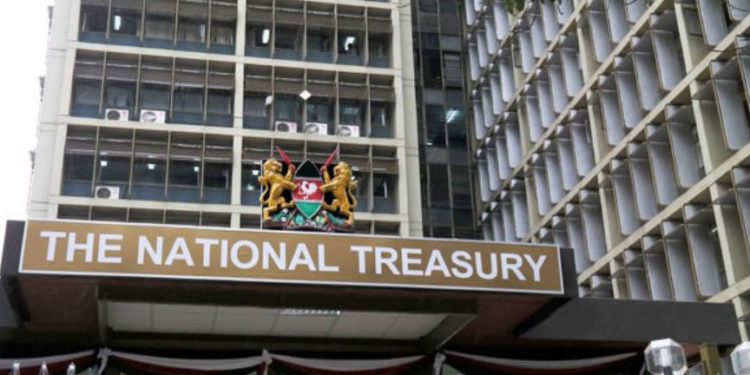In the financial year ending June 2024, Kenya’s external debt payments reached KES 756 billion, as the government aimed to limit domestic borrowing to preserve private sector financing.
This marked a significant increase from the previous year’s KES 402.4 billion, driven largely by the maturity of a $2 billion Eurobond, equivalent to KES 260 billion. The National Treasury report raised concerns about Kenya’s fiscal stability as it approaches repayment obligations.
Highlighting the impact of the Eurobond repayment, Treasury Principal Secretary Chris Kiptoo stated, “For external debt payments, a stronger shilling means we will spend fewer shillings per dollar, and we hope the KES 260 billion budgeted for external debt servicing will be lower.”
Kiptoo also emphasized that ongoing Central Bank reforms could alleviate costs in both external and domestic debt repayments through currency stabilization and controlled interest rates.
The Treasury report disclosed that Kenya’s total public debt stood at KES 10.6 trillion, with domestic debt accounting for KES 5.4 trillion. Domestic debt servicing reached KES 807 billion, reflecting a modest increase of KES 10 billion compared to the previous year, in contrast to the KES 354 billion jump in external debt servicing.
Domestic debt now constitutes 51 percent of total public debt, up from 47 percent the previous year, indicating a shift toward increased local borrowing.
Interest payments reached KES 840 billion, comprising 74 percent for domestic debt and the remaining 26 percent for external debt. “When we receive revenue from the Kenya Revenue Authority (KRA), nearly KES 7 out of every KES 10 goes to debt repayment. This trend has been growing,” Kiptoo noted, emphasizing the strain on national revenue.
The report also revealed a significant rise in debt servicing as a share of ordinary revenue, from 58.8 percent in 2022-23 to 68.3 percent in 2023-24. This escalation underscores the increasing pressure of debt obligations on Kenya’s finances.


















